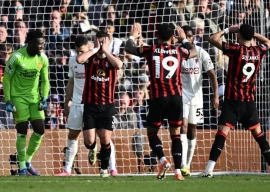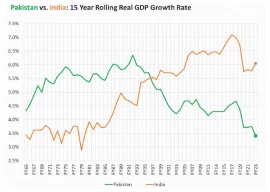1602150070-0/FotoJet-(2)1602150070-0.jpg)
MUMBAI:
It was a quest worthy of a superhero. Animator Rajiv Chilaka spent years flogging his pitch about a superhuman Indian child to Western executives, to no avail. But today, Mighty Little Bheem is a global hit, as viewers seek alternatives to white-dominated storylines.
From his mother's sari to his love of laddoos, everything about the star toddler is Indian. His giant fan base stretches from Seattle to Sao Paulo, making it Netflix's most popular show for preschoolers. Since its launch last year, it has been seen by more than 27 million households and was Netflix's top international release of 2019 in the United States! A third season is now underway.
1602150841-1/FotoJet-(5)1602150841-1.jpg)
But the nappy-wearing superhero's journey from Hyderabad to Hollywood was not easy. "I was thrown out of every office I went to," said Chilaka, who originally approached US television channels with the hope of taking Chhota Bheem - a nine-year-old village boy with superhuman strength - global. TV executives demurred, claiming children in the West would reject it because the setting was "too bright and colourful" and the protagonist was shirtless. "It didn't really make sense to me. I mean, kids are drawn to colour and Disney made Jungle Book - a whole film about a boy in his underwear...”
Although US studios regularly approach Indian animators to create English content at a lower price, the industry had never won acclaim for original productions. Then came Netflix. The streaming giant wanted to crack the massive Indian market and hoped a Bheem spin-off based on a baby version of Chilaka's beloved superhero would help to do just that.
No translation needed
"We really wanted to have a character that resonated for, first and foremost, our Indian members," Dominique Bazay, director of the original animation for Netflix, shared
There was no question of Westernising it. Bheem wears a traditional bindi and lives in a village where everyone is dressed in Indian clothing. Raised by a single mother, he crawls his way into every kind of mischief, occasionally including a monkey and elephant in his escapades.
The company was not worried about how the show - which has no dialogue - would translate among overseas viewers. "Kids are really willing to discover (new things) and their curiosity is boundless," Bazay explained.
Nevertheless, few expected Bheem and his furry friends to attract such a huge global audience, as it snapped up fans in the age of Black Panther and the growing demand for diversity.
Laughter and lessons
1602150841-0/FotoJet-(6)1602150841-0.jpg)
Bheem's antics - from banging his toy drum to making a mess at home - are instantly hilarious to young viewers. And for parents, the show is an easy way to introduce children to a more multicultural worldview. The single-parent household depicted also offers important lessons on how there is no one right way to have a family.
For Chilaka, the success has been both stunning and sobering. "When we started work, I was very conscious that this was the first animated show from India to find such a large platform," the 46-year-old confessed. "It was a big load on my shoulders because I knew it could open doors for others."
Bheem's success could prove a game-changer for India's animation industry, he added. It has already transformed the fortunes of Chilaka's studio Green Gold Animation, which has seen its staff numbers shoot up from 25 to around 1,200 people based in India, the US, Singapore, and the Philippines.
"We are still pinching ourselves," Chilaka said, adding that he hopes to produce a movie about the toddler at some point. "This little kid has turned my life upside down."
Have something to add to the story? Share it in the comments below
COMMENTS (1)
Comments are moderated and generally will be posted if they are on-topic and not abusive.
For more information, please see our Comments FAQ

















1713084265-0/DSC_9234-(1)1713084265-0-270x192.webp)






1712983198-0/iStock-1361391451-scaled-(1)1712983198-0-270x192.webp)









we love chota bheem